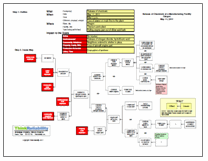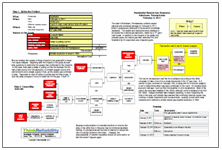A recent fish kill is estimated to have killed hundreds of thousands of marine life – fish, mollusks, and even endangered turtles – and the company responsible is facing lawsuits from nearby residents and businesses affected by the spill causing the kill. A paper mill experienced problems with its wastewater treatment facility (the problems have not been described in the media), resulting in the untreated waste, known as “black liquor”, being dumped in the river. The waste has been described as being “biological” not chemical in nature; however, the waste reduced the oxygen levels in the river which resulted in the kill.
Although it’s likely that a spill of any duration would have resulted in some marine life deaths, the large number of deaths in this case are related to the length of time of the spill. It has been reported that the spill went on for four days before action was taken, or the state was notified. The company involved says that action, and reporting to the state, are based on test results which take several days.
 Obviously, something needs to be changed so that the company involved is able to determine that a spill is occurring before four days have passed. However, whatever actions will be taken are as of yet unclear. The plant will not be allowed to reopen until it meets certain conditions meant to protect the river. Presumably one of those conditions will be figuring out a method to more quickly discover, mitigate, and report problems with the wastewater treatment facility.
Obviously, something needs to be changed so that the company involved is able to determine that a spill is occurring before four days have passed. However, whatever actions will be taken are as of yet unclear. The plant will not be allowed to reopen until it meets certain conditions meant to protect the river. Presumably one of those conditions will be figuring out a method to more quickly discover, mitigate, and report problems with the wastewater treatment facility.
In the meantime, the state has increased discharge from a nearby reservoir, which is raising the water levels in the river and improving the oxygen levels. The company is assisting in the cleanup, which has involved removing lots of stinky dead fish from the river. The cleanup will continue, and the river will be stocked with fish, to attempt to return the area to its conditions prior to the spill.
This incident can be recorded in a Cause Map, or a visual root cause analysis. Basic information about the incident, as well as the impact to the organization’s goals, are captured in a Problem Outline. The impacts to the goals (such as the environment goal was impacted due to the large numbers of marine life killed) are used to begin the Cause Map. Then, by asking “Why” questions, causes can be added to the right. As with any incident, the level of detail is dependent on the impact to the goals.
To view the Outline and Cause Map, click “Download PDF” above.









